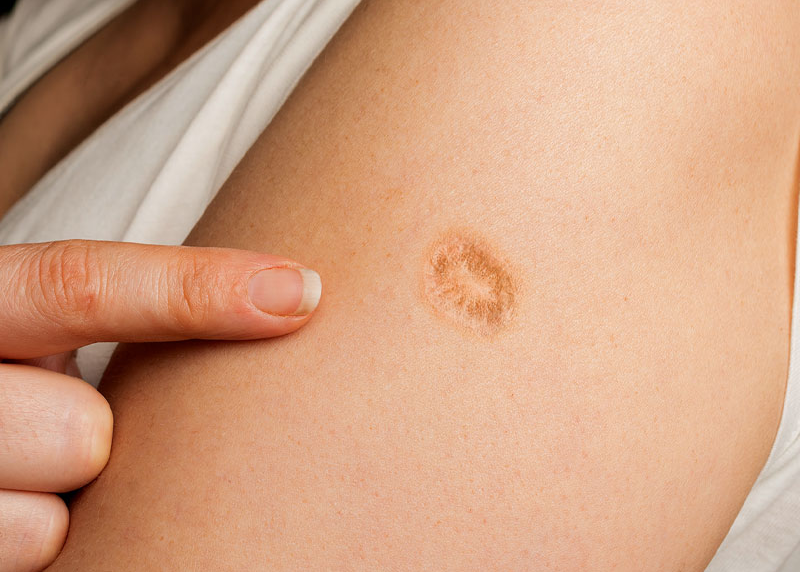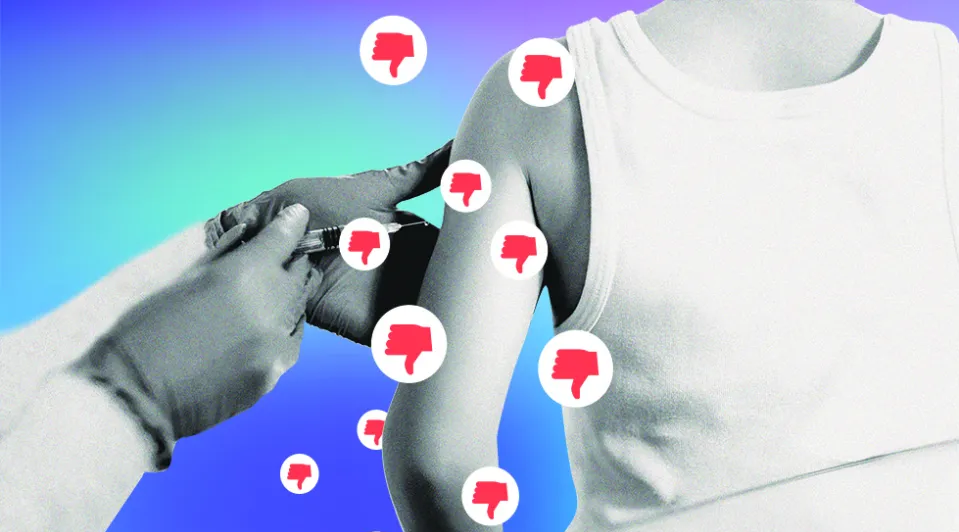If you’ve been following reporting from mainstream media outlets lately you could not have missed the flurry of stories about the resurgence of the measles in Canada or the U.S. Stern-looking public health officials with wrinkled brows are quoted as saying we’re about to be swallowed by a highly infectious disease that is vaccine-preventable. Apparently this is the next BIG thing to worry about.
Or maybe not.
By the old marketing adage that “You don’t sell the steak, you sell the sizzle,” you can almost hear the char broilers firing up in with measles stories like these ones:
Newsweek: Migrant Measles Cases Spark Fear of a Wider Outbreak
This CBC story: How concerned should we be about measles?
The Toronto Star: Measles rates are “skyrocketing!”
The Vancouver Sun: Measles in Canada: What to know about rising cases and increased vaccine hesitancy.” Noting measles outbreaks in Europe and Canadian health officials are “worried that spring break could reintroduce the highly-infectious virus to Canada.”
From The Sun (U.K.): “Parents to protect their children from measles surge as millions ‘at risk.’”
I have not done an exhaustive analysis of current measles coverage, but from the dozen or so stories I have seen, the reporting seems to contain surprisingly consistent take-home messages: Measles is deadly, outbreaks are caused by too many unvaccinated children, and so we need to give more vaccines to everyone. Some conclude with: We need mandatory measles vaccination policies. No room for nuance there.
Then the scientific literature such as this paper concludes with the following statement:
Measles continues to pose a substantial and preventable health care burden, with serious complications, hospitalization and inpatient mortality.
In other words, be scared. Be fearful, and run, don’t walk, to the next clinic offering you or your kid a measles shot because you might not be up-to-date.
What all these stories lack, typical of media outlets surfing a fear-mongering narrative, is a sense of context, a short splash of history, and even a toe-dip into the arithmetic of measles. Trigger Warning: I intend to discuss some math below.
How far back do you have to go in British Columbia, a Canadian province of 5 million people, to see what measles looks like? The last case in BC was apparently in 2019 but you have to go back to 2018 to see a report from the BC Centers for Disease Control report on the matter. The short report makes illuminating reading.
There were six cases of measles that year, in a population of 5.1 million. (math alert: Hence if you lived in BC you had a one in 850,000 chance of catching measles that year). There were no measles deaths. What do we know about the six cases reported? Of those six cases half were fully immunized with two shots, one had one, and one had a history of “childhood vaccines.” So maybe one could conclude that four to five of those six had some level of measles immunization. Hmmm. What is going on?
A Bit of History
Those of us born before 1970 with personal experience pretty much all agree that measles is a big “meh.” We all had it ourselves and so did our brothers, sisters, and school friends. We also had chicken pox and the mumps and typically got a few days off school. The only side effect of those diseases was that my mom sighed heavily and called work to say she had to stay home to look after a kid with spots.
It’s hard to find what the death rate from measles was in Canada before the measles vaccine was released in the early 1960s but if we take the U.S. as a proxy, in 1955 there were 345 measles deaths in the U.S. population of 165 million. (math alert: that’s a one in 478,000 chance of dying of measles in the pre-vaccine era).
Lots of people got measles back then as did me and my brother and sisters, but very few died. Other reports note that the U.S. death rate from measles, pre-vaccine was about 1 in 10,000 but this is likely to be an exaggeration because back then our parents who had a kid with a fever and a rash wouldn’t have gone to the doctor or reported it to the government. In other words, the 1 in 10,000 number only refers to the ten thousand people sick enough to have their case reported to the government or hospitalized. The true death rate in the entire population is likely much, much lower. How many of our moms phoned the government or even the doctor if the kid had spots and a fever? Almost none I’d conjecture.
Let’s face it, even a short trip back through history shows us that medical doctors were very blasé about measles, described as a “self-limiting condition of short duration, moderate severity, and low fatality.” In other words you got it, it didn’t last long, it wasn’t that bad and was very unlikely to kill you. The best thing about getting it, of course, is the bonus to your immune system as getting the real thing sets you up for near lifelong and valuable immunity. What has changed?
Thanks both to widespread vaccination and natural immunity, by the early 2000s measles was essentially declared eradicated in the U.S. and Canada, but still very much active in the developing world, where lack of proper nutrition (particularly vitamin A) puts malnourished kids at risk of all kinds of diseases, including measles. In Canada and the U.S., even with upwards of 90 percent vaccination coverage among children there are still outbreaks, mostly in middle and high schools.
This is not “failure to vaccinate” as the media will tell you, it is “vaccine failure.” Basically the vaccine doesn’t seem to work in some people. At the same time there hasn’t been a measles-caused death in Canada or the U.S. for at least 20 years. Let that sink in for a bit as you soak in the epidemic measles-mongering we’re currently experiencing.
Then there is the not-often-quoted fact that “wild measles” is different from the one we’re all vaccinated against, and this is not a bad thing. Researchers have found that we should be glad for wild measles still circulating in the community because it tends to boost people’s immune systems (even among the vaccinated) when they come in contact with it. An Italian study found that if you actually get measles, your immunity is lifelong, whereas your immunity after getting the two doses of measles vaccine declines within 10-15 years.
This paper looked at the recent experience with measles in the U.S. (2002-2016) and reported there were 1,018 measles hospitalizations over that 14-year period. That is 73 hospitalizations per year. There were a total of 34 deaths or about 2.4 deaths per year. That is out of a population of 327 million people. So your chances of dying from measles in the U.S. was about one in 136 million.
We are told that globally measles is a huge deal. Like any disease it’s certainly a bigger deal if you are poor and don’t get enough to eat. However, in 2019, the World Health Organization reported 839 cases in 23 states comprising 328 million people, thus making the rate about one in 391,000. It’s true that kids in poor countries can die from measles, yet they also die from everything else that kills poor, malnourished people living in countries without clean water or sanitation or functioning health care systems. Many infectious diseases including measles attack the most immune-compromised, who also happen to be the poorest, least robust people on the planet.
The miniscule numbers we’re talking about in the developed world, however, suggest that the risk of death from measles is wildly overblown.
This question lingers for me: why do public health people aided by the mainstream media feel they need to exaggerate, distort, and fear-monger with this ‘disease?’
Perhaps the current set of public health officials aren’t very good at ‘reading the room’ in our post-Covid world, where past obvious lies and distortions have seriously impacted our collective ability to trust public health advice. Yet the campaign continues to try to scare the heck out of people claiming measles is a disease that represents a “substantial and preventable health care burden, with serious complications, hospitalization and inpatient mortality.”
Some might say: Yes, but, how bad would the measles death rate be if we didn’t have widespread measles vaccines available? Now we’re getting hypothetical here and no one can answer that definitively. To me, it’s an unprovable straw-man argument and no defense for the blatant use of fear, distortion, exaggeration, and hype to scare people about a disease where the potential for harm for most of us is so remote as to be laughable.
What does this exaggeration do? A recent Canadian survey found that opposition to mandatory vaccinations in children has grown from 24 percent (before the pandemic) to 38 percent (2024). This is the collateral damage of forcing vaccines on people which we saw deployed with Covid-19. Again such actions just cause people to stop trusting “official” health advice and push back against coercive measures.
I have spent a lot of my professional career countering fear-mongering and misinformation related to many prescription drugs, including those for high blood pressure, cholesterol, obesity or blood sugar, conditions for which crass and pharma-fuelled messages confuse consumers and drive them back and forth to the doctor for more tests and more pills.
A colleague of mine, Dr. Joel Lexchin from Toronto, recently published a chapter on disease mongering in the Encyclopedia of Pharmacy Practice and Clinical Pharmacy. He concluded: “Disease mongering promotes a view of people not as healthy autonomous beings but as vulnerable individuals always at risk from a threat just around the corner.”
This is what is happening with measles. Big media and government overhyping the nature of an illness, which history has shown us can be a precursor to some very bad public health policies such as mandatory vaccination programs and other coercive measures. Does it make sense to be measles-mongering when the level of herd immunity, obtained through natural immunity and vaccination is already pretty substantial? Doing so is the equivalent of crying wolf or shouting fire in a crowded theatre. You unnecessarily alarm people and thus, down the road, when you do need them to pay attention to something actually serious, no one will trust you.
On a last note, we haven’t discussed the downsides. My mantra is that any medicine that can help can also harm. What do we know about the harms of the measles vaccine? The honest answer is there are some serious gaps in our knowledge. We can’t deny that some people are regrettably hurt by vaccines. In the case of the measles vaccine, how many people have been hurt?
Pinning down an exact number is extremely hard to do as those numbers rely on vaccine adverse event reporting, a notoriously unreliable source of data. The reporting of drug or vaccine adverse events to health authorities is so poor that maybe one in 100 adverse events ever get reported to a government agency. That was the conclusion of the Harvard Pilgrim study on the rate of reporting to VAERS (the Vaccine Adverse Event Reporting System). (math hint: if you hear of a drug or vaccine that caused 1,000 reported adverse events, then multiply that by up to 100—so the true number possibly suffering that adverse event could be about 100,000 people).
U.S. statistics drawn from a pool of people seeking compensation for injury or death caused by vaccines reported that between 1988 and 2023 there were 1,048 such reports linked to the MMR vaccine (the one that contains measles vaccines) made to the National Vaccine Injury Compensation Program in the U.S.
Next to the flu vaccine or the DPT shot, the MMR vaccine had the third-most number of people seeking compensation for injury. If the 1,048 reports are only a tiny fraction of the people actually hurt by the vaccine, the true number could be closer to 100,000. Remember, this is a ‘disease’ that caused 34 deaths over a 14-year period in the U.S.
For a final comment to those who say the measles vaccine is “incredibly safe,” I hope they are right but I would also ask what reliable research are they pointing to in order to support that conclusion.
A 2012 meta-analysis from the Cochrane Collaboration (which takes no money from the pharmaceutical industry) examined all the data they could find around the globe on the safety of the MMR vaccine. They found 57 clinical trials with a total of 14.7 million children who had received the MMR vaccine. Cochrane’s conclusion stated that: “the design and reporting of safety outcomes in MMR vaccine studies, both pre- and post-marketing, are largely inadequate.”
In other words: As much as public people shout “safe and effective” from the rooftops and browbeat those who are ‘hesitant,’ the reality is that the safety studies done on that vaccine both before and after they were approved for sale are no help in answering the question of overall safety. If anyone has a more comprehensive meta-analysis of the overall safety of the MMR vaccine, please let me know.
To conclude, the current state of Modern Measles Mongering is a leitmotif of post-pandemic public health, where the state and mainstream media measles-mongering is actively telling the population to fear a disease that has an extremely remote chance of you getting it and an even more remote chance of you dying from it. It predictably recommends everyone do whatever they can to protect their family (ie: get more measles shots) which may or may not protect you. And if you get the shot, please know that any safety research on the measles vaccine is mostly inadequate.
This article was originally published by the Brownstone Institute. Alan Cassels is a drug policy researcher and author who has written extensively about disease mongering. He is the author of four books, including The ABCs of Disease Mongering: An Epidemic in 26 Letters.














11 Responses
I have a question, I read info a while back that said, we don’t really know how well the shots even work, most ppl in the 50’s-70’s had the measles & gave their immunity to their babies, but once all the boomers are gone we might see the measles come back due to all of the life long immunity being gone & the shots are worthless. But they will always blame the unvaxxed for everything even tho getting the wild measles has more benefits later on then not. Does this sound about right?
I don’t know if those who would contract measles without the immunity boost of their mothers would be beneficial or not. How long does that immunity last? 6 months? One year? I doubt a lifetime.
However, what I do know is that those who get sickest with the measles are low in Vitamin A and that large doses of IV Vitamin A is given to the sickest over a 3 day time period when seen by a doctor (in 3rd World countries).
Vitamin A is anti-viral, just as is Vitamin D3 and Vitamin C. All three also boost one’s immune system. NAC, Resveratrol, Zinc, and other supplements are also anti-viral. Much more, but just what is coming to me at the moment.
It is good to be knowledgeable on how to treat loved ones when sick. Whole foods, supplements, some herbals, virgin coconut oil, magnesium baths (Epsom salts) and more are good to use when one is sick.
The author claims there hasn’t been a measles death in the U.S. or Canada for 20 years. Then, a paragraph or two down, cites a study in the U.S. between 2002-2016, which references 34 measles deaths during that time period. Which is it?
When he says there “were no measles deaths,” he is referring to the province of BC in Canada in 2018, not no deaths “in the U.S. or Canada.” A few paragraphs later when he mentions the “34 deaths,” he is referring to an Italian study that “looked at the recent experience with measles in the U.S.” from 2002 to 2016. That’s the way I read it anyway.
The measles, mumps and chickenpox vaccines worked for me. I caught all of those viruses after I was vaccinated as a child. Not before. BTW, I think the above mentioned shots are referred to as MMR shots these days.
The MMR refers to Measles, Mumps and Rubella; Chicken Pox is not part of the MMR. The chicken pox shot came out around 1992. Rubella is German Measles (3 day), while Measles is the Old Fashioned Measles (7 day). No vaccine is 100% effective or safe.
The article should have included what ingredients are in the vaccine.
I hope this latest Measles outbreak expands to the whole country. It would be one of the few beneficial things to happen in a very long time.
Boomers would not be affected as we have natural immunity.
What a great, logical well written article! We are so bombarded with disease mongering and fear porn that writers like this seem rare. Thank you for this. Very well written, and I took notes to back-up comments because the measles mis-info is out in full force.
the dead rate of 1 per 478,000 is for only 1 year.
if evey year was as bad as 1955 and people live 72 years it would be 1 in 6640.
Now US have better medical, and in 2019 0 died. The benefits ain’t worth a trip to the MD.
We spend more time and money on the shots than we would on treatment, not counting any adverse reactions.